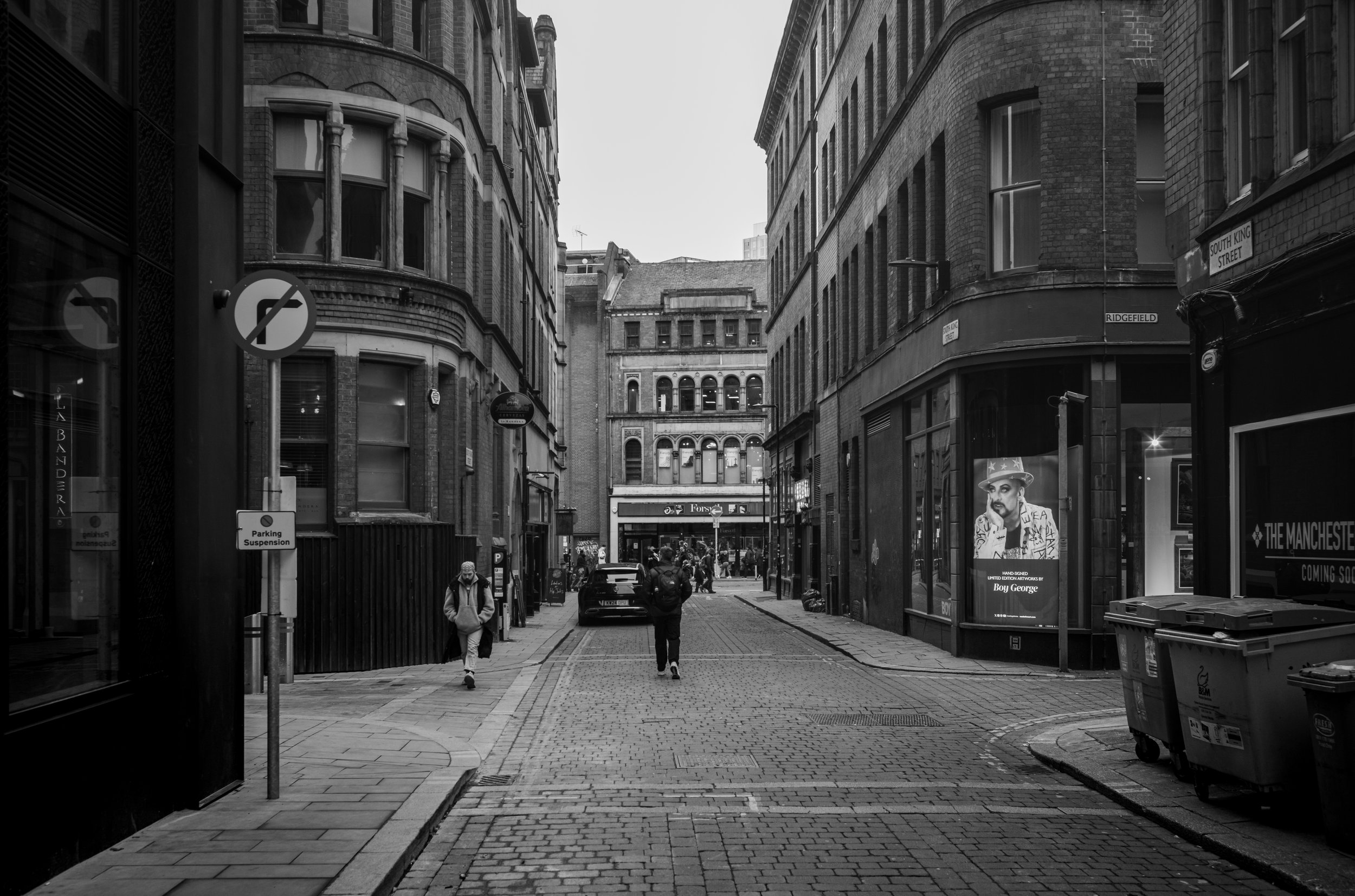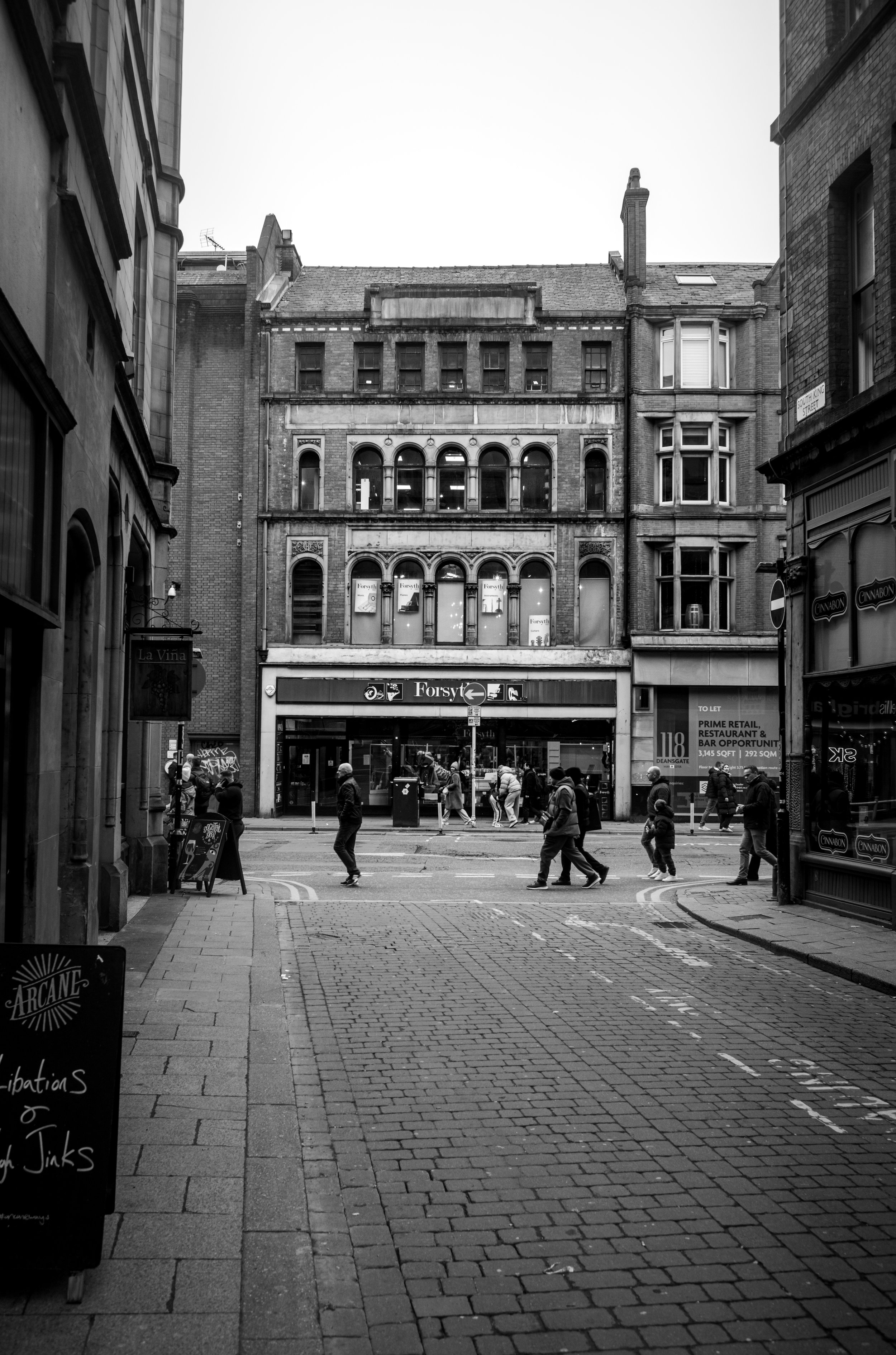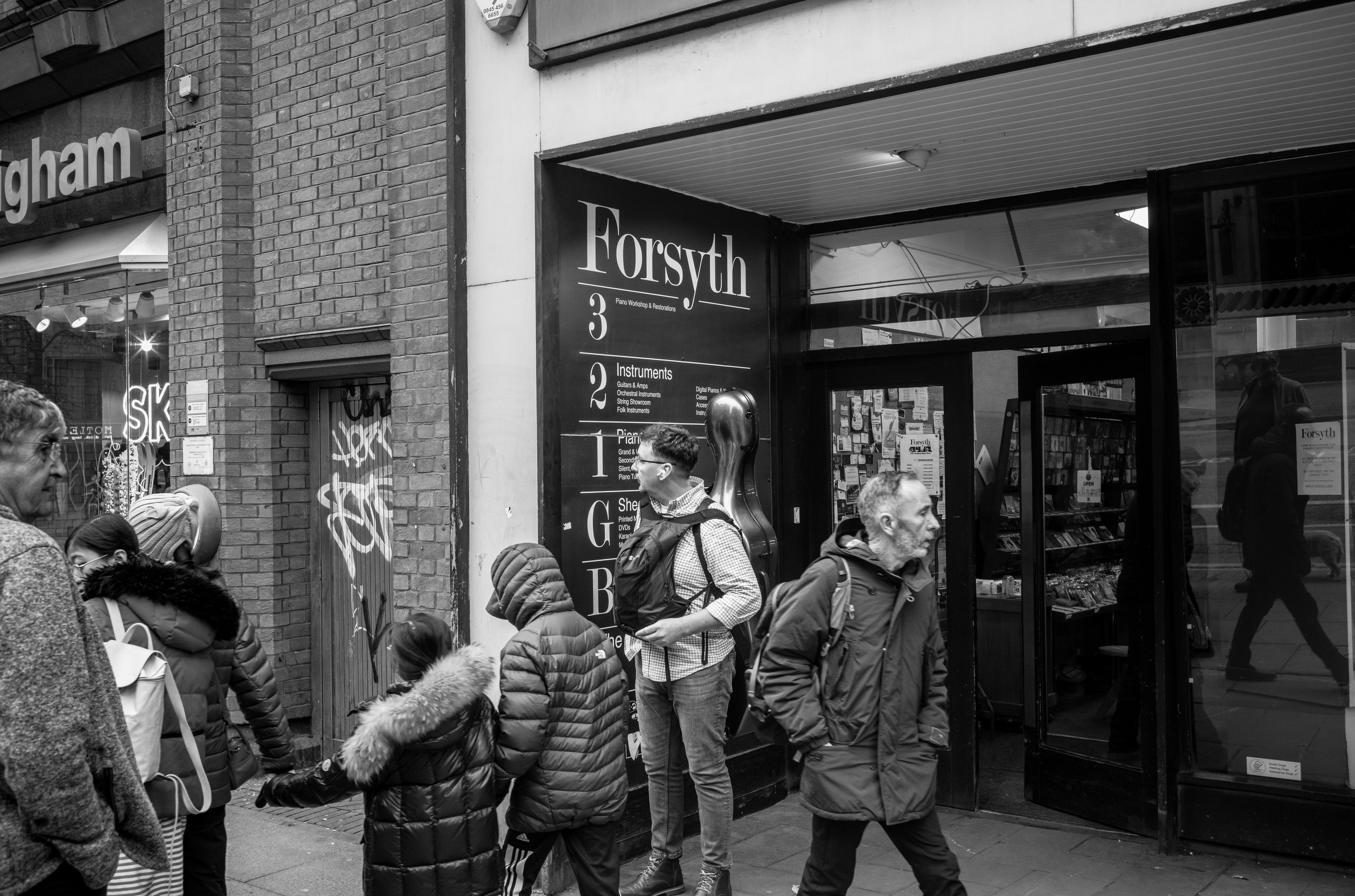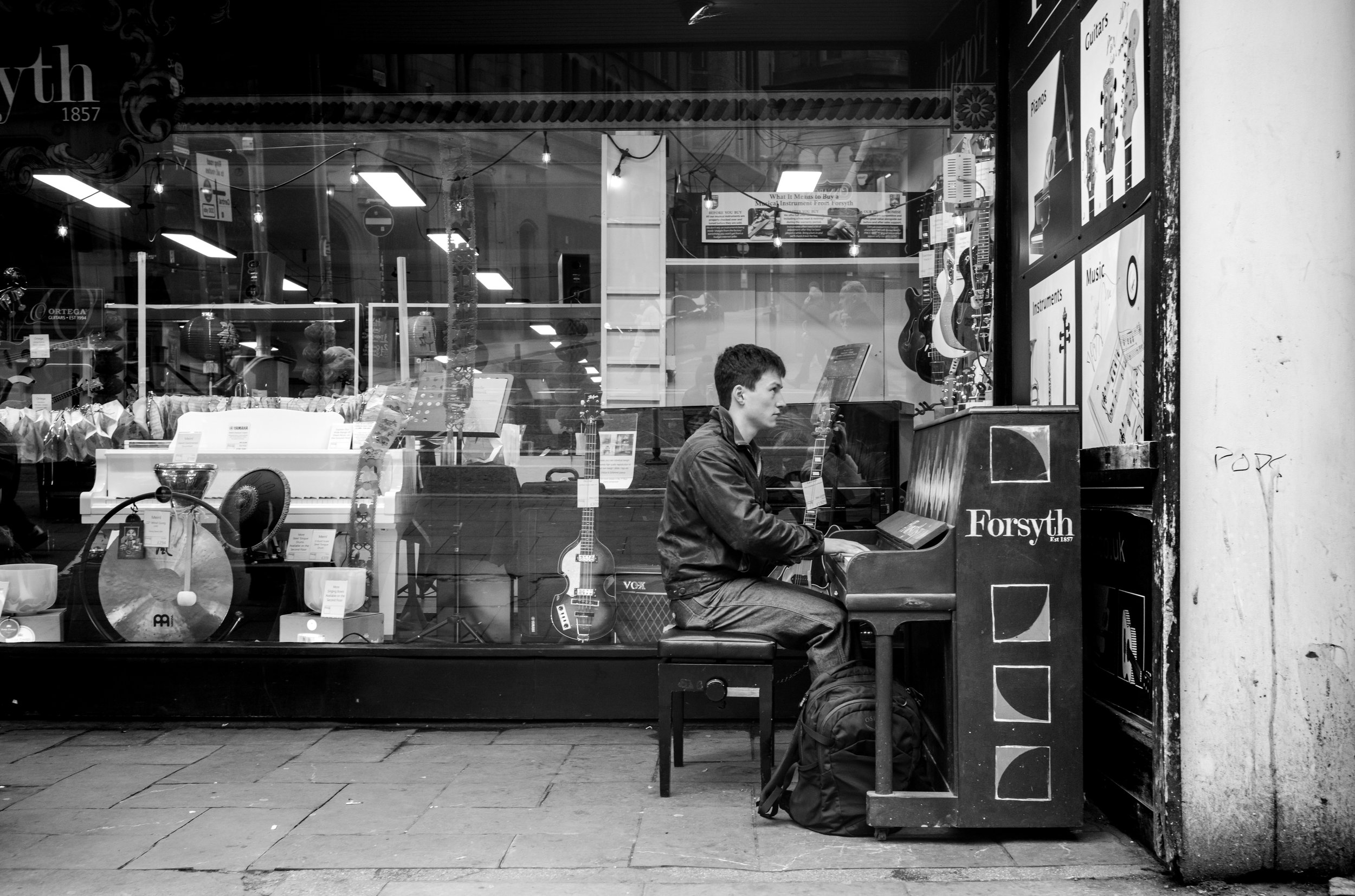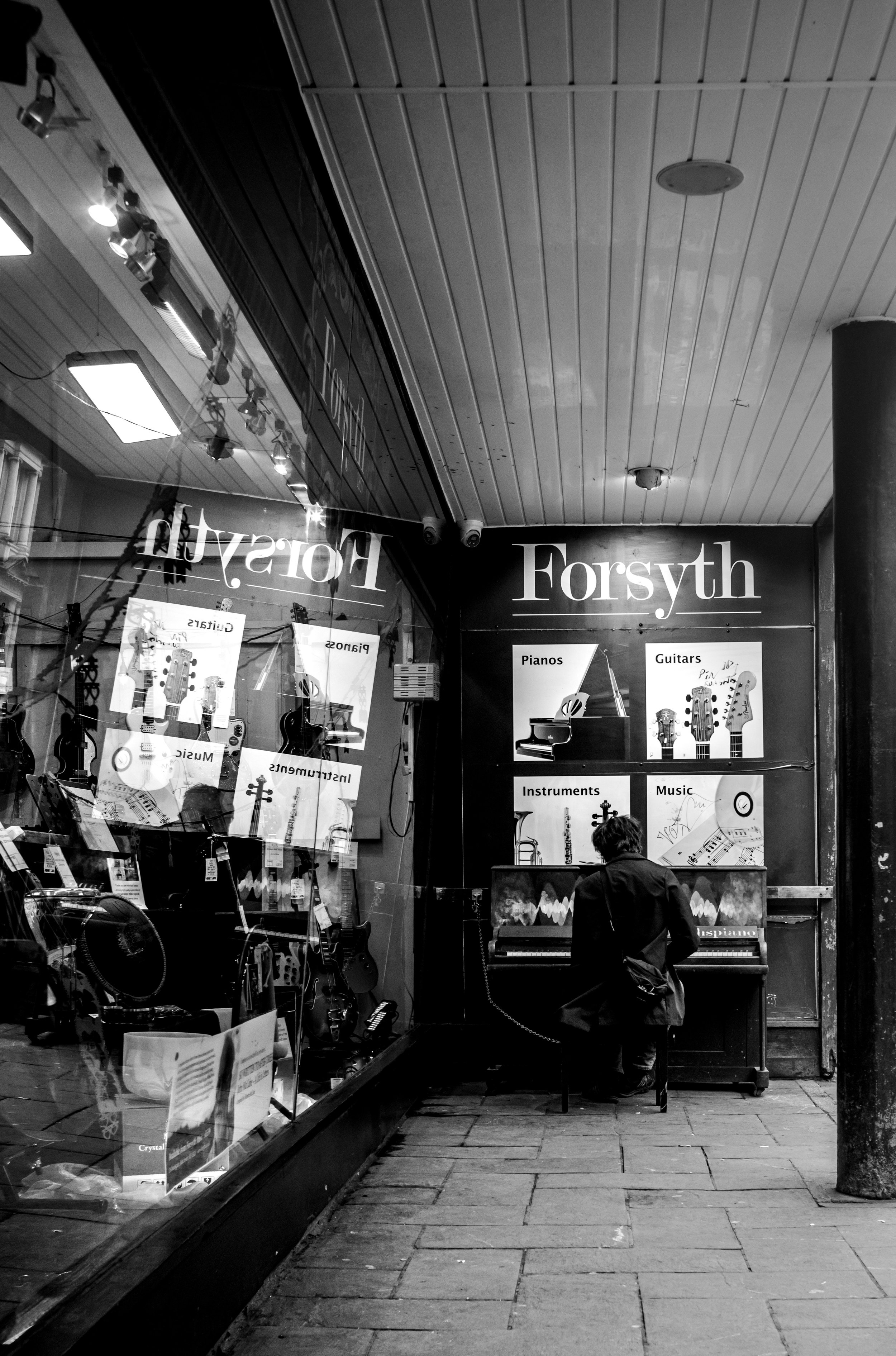
A Store of Sound, a Legacy of Hands (2025)
This photographic series documents Forsyths on Deansgate, a music shop that has operated continuously since 1857, serving as an exploration of how certain spaces resist temporal erasure and maintain cultural relevance across centuries. Through the lens, I investigate what it means for a business to embody "pure stubborn continuity" in an age of digital disruption and constant rebranding.
My images seek to capture the shop's unique relationship with time, how it functions as a repository where generations fold in on themselves. I'm drawn to photographing moments where kids trade school-loan violins for instruments that will truly become theirs, where grandparents return with grandchildren, creating visual continuities that span decades. The camera becomes my tool for documenting how this space slows time while the city accelerates around it.
What compels me photographically is how the Victorian architecture was purpose-built to hold sound. Every carved detail, every soaring ceiling height was designed with acoustic intention, and my images attempt to capture this marriage of form and musical function. I photograph the light as it falls exactly as it always has, catching dust and transforming ordinary air into something that feels borrowed from another century.
The upright pianos become my recurring subjects, each one standing in formation, holding anticipated stories in their polished wood. Through careful composition, I try to convey how these instruments wait with patient permanence, each one representing a quiet rebellion against our increasingly digital world. My photographs explore the weight and presence of instruments that cannot be adequately experienced through screens.
I'm particularly interested in documenting the windows that have watched Deansgate transform around them—from trams to cars to trams again, while reflecting every version of Manchester back at itself. These glass surfaces become metaphors for continuity and change, for how some things endure while everything else shifts.
My approach acknowledges Forsyths as more than a retail space. Through these images, I examine how certain places function as temples to experiences we risk forgetting: the necessity of touch, the irreplaceable nature of physical interaction with musical instruments, the way sound needs proper space to live and breathe.
These photographs pose questions about cultural preservation and commercial survival: How do traditional businesses maintain relevance without compromising their essential character? What visual evidence can we find of a shop's role in shaping musical culture? How do we photograph the invisible connections between hands, instruments and the music they create together?
This work represents my attempt to document a space that embodies everything essential about music, wrapped in Victorian brick, still standing its ground on Deansgate, still insisting that some things must be touched, felt and played into life to be truly understood.
